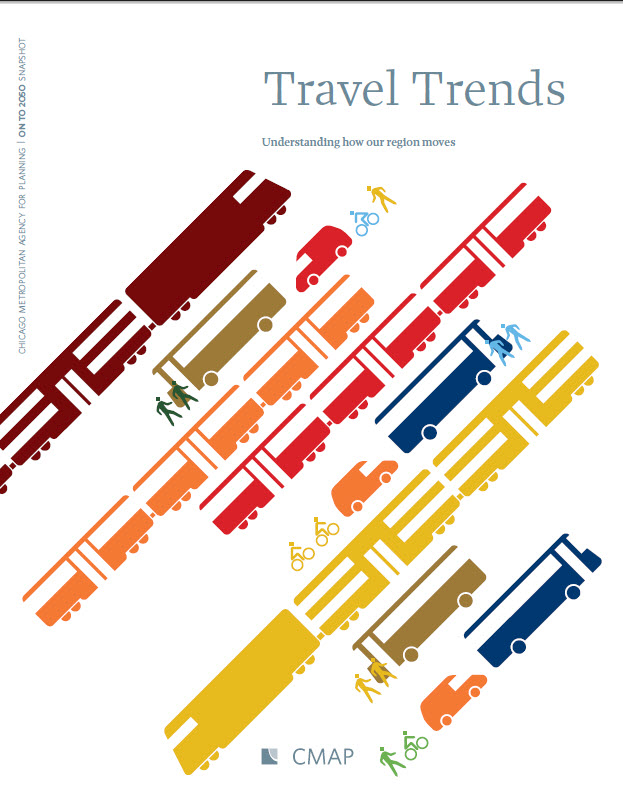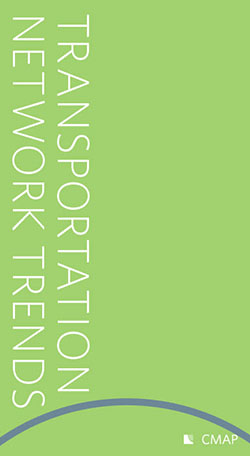Transportation Network Trends
Transportation Network Trends
Update: The ON TO 2050 snapshot report, Travel Trends: Understanding how our region moves, is now available. It is the first in a series of snapshot reports that will look at the region's transportation network. To share the report with colleagues via your organizational newsletter or social media, take a look at our Partner Toolkit. Selected data used in the development of this report can be found on the CMAP Data Hub.
Travel Trends: Understanding how our region moves
Transportation Network Trends 2
Understanding how residents use the region's transportation system and how that use changes over time is critical to effective planning.
Documenting travel behavior and trends in our region, such as the types of transportation modes people use to commute and how transit ridership and commute times have changed over time, is essential to planning for a transportation system that meets the needs of all the region's residents. Likewise, considering other changes in behavior, like at what age and rate people are getting drivers licenses or using car-sharing services, helps transportation planners prepare for the future.
It is equally important to examine how our transportation system is performing. For instance, looking at how transportation dollars are spent and the outcome of that spending can translate into more effective budgeting. Using this data can help us reach our livability goals as a region.
ON TO 2050 can help the region address our changing transportation needs.
CMAP staff will use the upcoming, data-driven Transportation Trends Snapshot report in developing indicators and strategies for ON TO 2050. A core function of our role as a metropolitan planning organization is working with stakeholders to understand where our region's transportation system is now and how we measure against our targets. This information will be essential in helping the region to refine and improve the system.
This is your plan.
Continual input by stakeholder organizations and individuals was vital to the development and implementation of GO TO 2040. From now through the next plan's adoption in October 2018 and beyond, CMAP will be engaging a broad cross-section of partners from across the region.
Take a moment to fill out the questions below, and for more information on CMAP's public engagement efforts, please visit www.cmap.illinois.gov/get-involved.
Related Documents
Preliminary Findings: Presentation to CMAP Transportation Committee

